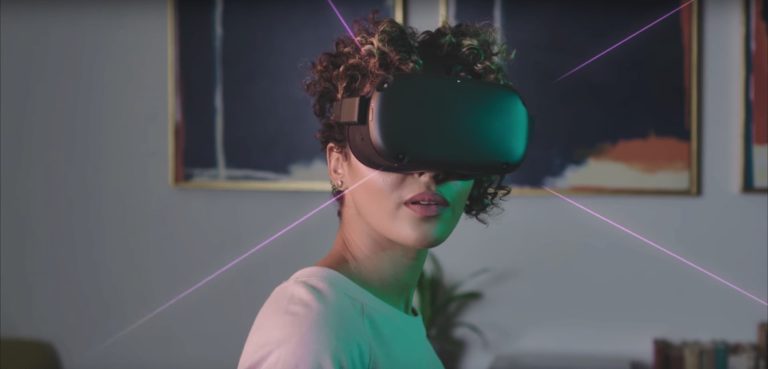
They say that necessity is the mother of invention. That phrase applies to my work in designing a system to address my own motion sickness issues while using VR.
Almost three years ago, I started to work on a solution that would allow me to move beyond a physical VR playspace without inducing motion sickness. At the time, the only VR experiences I could enjoy were those that felt stationary. However, I believe that the VR experience has to be much more engaging before becoming mainstream. While I understood that VR has great potential, there was a limiting factor. It’s quite simple: physical space is limited, while virtual environments can be massive.
Start with the Problem
Before I could start creating an adequate solution, I had to understand the problem. Most people will put on a VR headset and be amazed by the immersiveness that it offers. Assuming that the user has a designated play space, every movement in this play space feels natural. The user experiences their VR environment as they would in real life.
However, the immersion is broken when the user attempts to explore the virtual world beyond their play space. Now, imagine naturally walking down a virtual path until you reach the end of your playspace and needing to resort to device input to virtually slide along the virtual path. This creates an unwanted two-tier experience that impacts the overall feeling of presence in VR.
Next was understanding the different methods of locomotion in VR and how they affect user experiences. The three most popular methods for VR locomotion are controller joystick, teleport, and VR treadmill. First, the user could move with a controller joystick, causing their character in VR to move while stationary within their actual physical space.
This method not only negatively affects realism but has also been known to cause motion sickness. Second, is the teleport method, where the player can instantly move to another location. While convenient, this is a very unnatural way to move around and disrupts realism completely. Lastly, VR users could opt to buy a VR treadmill. Although this is the best option out of the three, the artificial feeling of walking on a treadmill and the cost have kept it out of reach for most users.
Define the Objective
Creating a solution was straightforward, as there were only two objectives: maintaining user immersion and requiring no additional hardware. Since additional hardware couldn’t be the answer, the solution had to be software-related. Furthermore, the VR experience is primarily visual; therefore, the solution had to involve some sort of visual trick. In the same way that computers need to reuse RAM to store short-term data, VR users need the ability to reuse their playspace for locomotion. Consequently, the only viable solution was to create a system that manages physical space and visual perception.
The culmination of limitations and ideas led to the development of the Physical Space Management (PSM) system. PSM provides an automated, seamless, and efficient technique for exploring a VR environment beyond a limited play space. The two main functions of PSM are to automatically guide the user around their playspace efficiently and lock/unlock the field of view. The system will automatically guide the user approaching the edge of their play space toward an optimal open space.
A seamless experience is only possible because PSM has locked the angle of the field of view, known as space loading, keeping the user visually committed to their current virtual path. Locking the field of view can be seen as a “loading screen” while PSM directs user movement. To be efficient, PSM also searches for opportunities to combine other actions with space loading. For example, if opening a virtual door near the edge of the play space, PSM will direct the user to turn while opening the door. PSM allows the end user to experience transcending into their virtual environment naturally and endlessly.
Conclusion: Making VR Accessible
In conclusion, PSM offers a much more engaging experience with VR. By seamlessly reusing space without the need for expensive hardware, PSM makes a compelling VR experience more accessible to a wider audience. The hope is that PSM improves the overall VR experience and makes an impact on the industry.

Meuy Xaimuangmonh is the founder and CEO of unbox vr.

